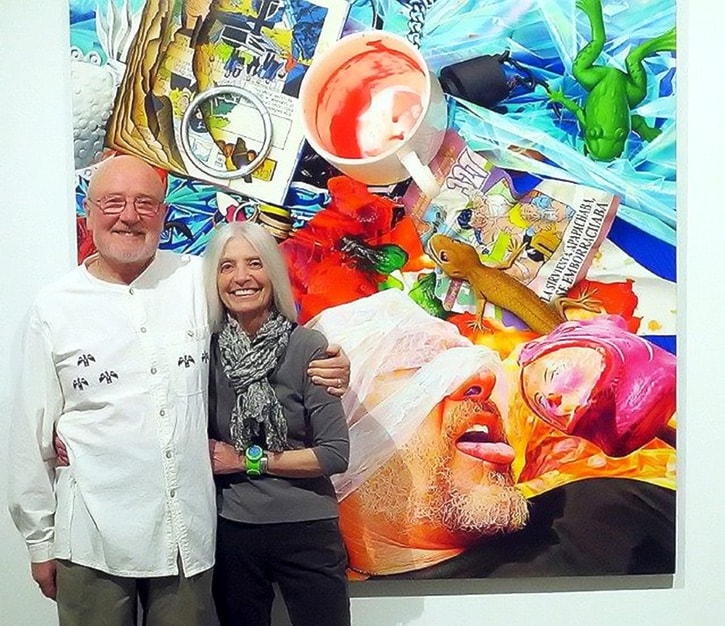Two artists, two countries, 12 paintings, and the pleasure of collaboration. None of it a simple task or situation, but worth the experiment to see what might transpire.
Artists John Hall and Alexandra Haeseker each looked to their individual experiences of living part of the year in central Mexico. It was enough of a disconnect to start new bodies of studio work. They invited a dialogue-without-words by passing unfinished paintings back and forth between them to have the other complete, as each saw fit.
The results are 12 complicated paintings, which are about to be shown in the exhibition Pendulum/Pendula at Headbones Gallery in Vernon.
“The title, Pendulum/Pendula, is in the two languages of Canada and Mexico and as the nuances of a culture are oft defined through the specific articulation of the language, this is an apt titling for both cultures are evident within the imagery,” said Headbones owner/curator Julie Oakes.
Born in Holland, Haeseker is based in Calgary, where she and her husband, artist Derek Besant, both taught at the Alberta College of Art and Design. They have divided their time between San Miguel de Allende, Mexico, and Canada.
Hall is a professor emeritus from the University of Calgary and he and his artist wife, Joice Hall, also lived and worked between Calgary and Mexico during the time that Pendulum/Pendula was created from 1992 to 1998.
There are clues from each artist as to what was influencing them in their own studio practices before coming up with the 12 paintings in Pendulum/Pendula.
Haeseker had been creating compositions using partial portraits, dime store objects and bright pop colours, while Hall had used masks, Mexican cha-chas, and a panoply of reflective foil and plastic papers.
“Each was masterful. Together they reached even further - almost over did it - for as they co-operated in their shared realm of technical perfection, their shared strength becomes as hard to visually endure as opening the kitchen junk drawer and trying to find a quickly needed key,” said Oakes.
The imagery in Pendulum/Pendula is similar.
It’s something that early Netherlandish painter Hieronymus Bosch might have embraced, says Haeseker.
“(It shows) heads wrapped in cellophane, limbs cast out of metal, the entrails of the paper ribbons streaming like fallen rain, cheap plastic toys painted in exquisite detail, and the realm of the foreigner present, as through the looking glass of what Mexico yielded to them as subject matter,” said Haeseker.
Some parts are painted in opaque flats with sparse definitions, but rendered in a systematic painted language.
“Another section reveals stained washes built up in layers that confound one’s perception of what lies behind the masks, or the narratives of comic books, Jello and glass, or how Barbie ever ended up in a Mexico street stall,” said Haeseker.
Pendulum/Pendula opens with a reception at Headbones Gallery, 6700 Old Kamloops Rd., April 16 from 6 to 8 p.m. with the artists in attendance. The gallery hours are noon to 6 p.m., Tuesday to Saturday.
The exhibition continues until May 28.
